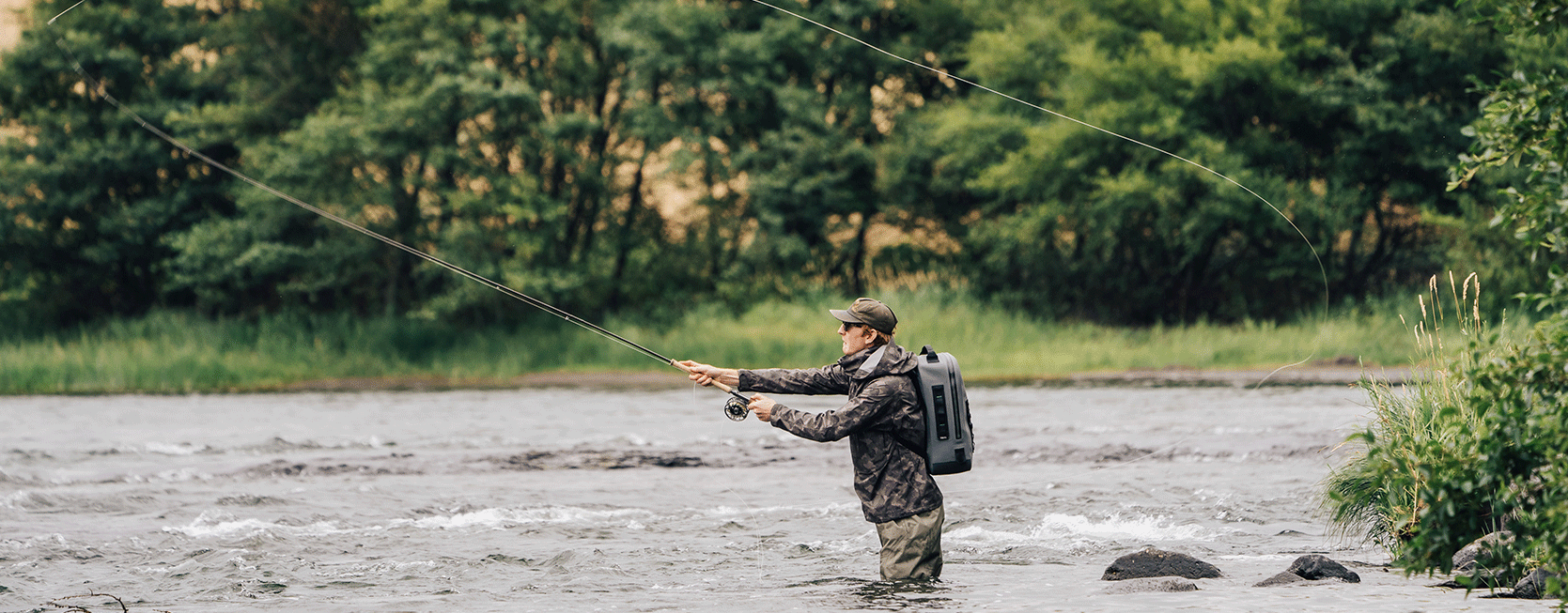
LEARNING HOW TO SPEY CAST FROM KAMCHATKA STEELHEAD GUIDE, JUSTIN MILLER
Outdoorsmen and women typically relish in the fact that the odds are against them in being successful in their pursuit. We aim to have personal skills and tools that can help us work through challenges and obstacles in the field—and even if we come home empty-handed, we still got to enjoy the open-air. Learning how to Spey cast is one of those skills that every fly fisherman should have in their pocket and utilize when literally up against a wall or treeline that’s waiting to snag their fly line.
Additionally, Spey casting requires no false casting. Meaning no wasted or extra motions and subsequently, keeping your fly in the water longer. Arguably the best part of having this cast in your back pocket is that when done right, it’s effortless. You will feel like you’re not doing anything—which makes landing the fish you’re chasing that much more exhilarating.
On the banks of the River Spey in Scotland where the innovative technique originated, iconic fly fishermen, such as Alexander Grant, mastered the cast in order to have better control of their line and fly at a distance. They could easily change the direction of their casts and launch them into far pockets of the waterway where steelhead were holding—a big reason the technique continues evolving and is being used across the world today.
As any seasoned fisherman knows, you have to be adaptable and flexible in your approach to landing the catch of the day. The Spey cast is an invaluable tool in your fly fishing arsenal, yet there is a time to use it and a time when you shouldn’t. We know every situation differs and we can’t speak to what yours may be, yet there are still a few things we can share with you with help from experts like Justin Miller.
Similar to any casting approach, when trying your hand at Spey casting, always be aware of the wind direction and river position relative to you. To do away with errant flies hitting you during the cast, your anchor and subsequent D-loop should always be placed on the downwind side. To make this happen, ideally you will need to be able to cast with either hand up the handle (easier than it sounds). Remember, Spey casting is like a skillfully timed dance and requires technique—not brute force.
The 5 F’s of learning how to Spey cast:
1. Face square downstream
2. Find your anchor point
3. Form the D-Loop
4. Forward Cast
5. Fish on
Check out our video of Kamchatka Steelhead guide, Justin Miller, showing how to Spey cast—easy and efficiently.
Although easier to watch than describe, we pulled a few of Justin’s pointers on how to Spey cast for you here:
ANCHOR POINT (0:47)
Your anchor point is the fulcrum of successful Spey casting. Every following motion you do will pivot around the spot at which you “lock” your line to the water.
Not only is this the source of tension you need to launch your fly in that honey hole you’re trying to reach, but it is also how you zero-in on your target. Ensuring your line is straight in the river with limited slack line is integral to using the water as tension and forming your D-Loop.
FORMING THE D-LOOP (0:58)
If you did the first two steps correctly, your line should be glued to the water and provide the tension needed to load the rod and roll your fly to your target. With your rod and arms relaxed, you begin the D-loop by lifting your forearms and rod 45 degrees, smoothly rotating your hips to your casting side and sweeping your arms up and around to become ear-level. It’s that easy—sort of.
To form the D-loop with your rod, think of drawing the letter “D” from a bird’s eye view. Just as important to the accuracy of your cast, you must keep your D-loop motions smooth, without wobbling off plane. Remember, skillfully timed dance—not something to be rushed. If you are a visual learner, Justin showcases this in our video.
FORWARD CAST (1:09)
The culmination of your first Spey cast is the forward cast. After a slight pause to maximize the tension against your rod following forming your D-loop, you will effortlessly pitch your fly in a straight line to your target and parallel to your anchored line.
Rather than racing to the finish of a cast—you can appreciate the smoothness of your motions in fly fishing as the kind of therapy in the outdoors we all love. Like any good fly cast though, finishing with a crisp stop transferring the force from your rod to your line and toward the fish is integral in learning how to Spey cast successfully.
When you head out on the water to try your hand at Spey casting, make sure you are prepared with rugged fishing gear willing to handle your adventures and all the fish along the way.